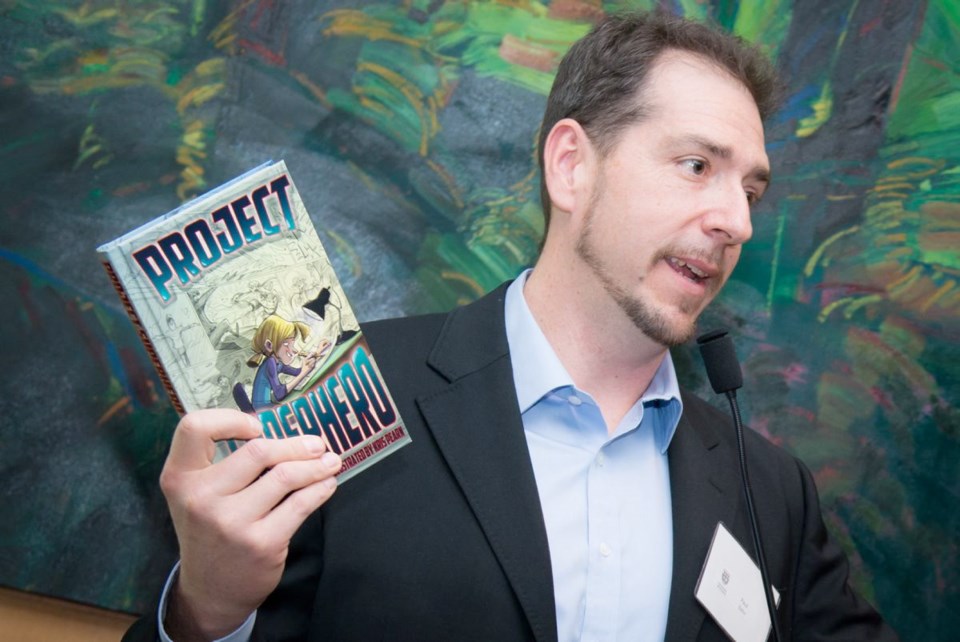Ask E. Paul Zehr what comic books can offer to science and he will tell you: a different way of teaching.
Zehr, a professor of neuroscience at the University of Victoria and director of the UVic Centre for Biomedical Research, has written numerous academic papers. He has also authored three books on science.
But unlike the academic papers, his books — Project Superhero, Inventing Iron Man and Becoming Batman — are aimed at ordinary people. To make them accessible, Zehr uses superheroes to explain scientific concepts.
“I’m a big believer in blowing the ivory tower down, taking it down brick by brick and getting rid of it,” he said in a telephone interview.
In a ceremony last month in Chicago, the Society for Neuroscience recognized Zehr’s efforts at increasing understanding of neuroscience and science in general. In addition to writing the books, Zehr started the Café Scientifique public lecture series in 2008.
Zehr considers the honour a vindication of a risk he decided to take about 10 years ago, when he opted to pitch his ideas directly to regular folk.
“I took a risk,” said Zehr, who studies the neural control of movement and neural plasticity after stroke. “I was already an established scientist in my field, doing my own thing as a professor.
“But when I suddenly started writing about superheroes I was worried about what my colleagues might think. Was I making things too simple or dumbing things down too much?”
He has a new way of thinking. People aren’t simple-minded or dumb. They may not be equipped with a scientist’s specialized vocabulary, but they shouldn’t be expected to.
Zehr uses comic book superheroes because they seem to have ignited the people’s imaginations, especially in movies.
“The reason it’s called ‘pop culture’ is because it is popular already,” he said. “I just thought, ‘Why not use superheroes as a mechanism for talking about other things?’ ”
Zehr said comments from academics about his approach to popular science have left him wondering if some colleagues dismiss his work.
On the other hand, he believes it’s part of his job to share what he knows. If people are going to understand and demand good policy on controversial topics such as vaccines, reproductive medicine, or global warming, the very least scientists can do is explain themselves in ways they can grasp.
“People shouldn’t have to feel like they are being talked at or talked down to by someone who acts like they are just smarter than they are,” Zehr said.
“I’m really passionate about this because I believe it gives our society the best chance to make the good choices.”
ZEHR’S BOOKS
• The nonfiction Becoming Batman (2008) looks at the story of the Caped Crusader to better understand the workings of the human body. Would it be possible for a human being to physically train up and become physically capable of Batman’s comic-book feats?
• Inventing Iron Man (2011) examines the possibilities of marrying a human body with a technologically equipped, suit of armor to boost the capabilities of a human.
• Project Superhero (2014) is a graphic novel about a schoolgirl and science fan who confronts her own issues with thoughtfulness, ingenuity and some inspirational assistance from various heroes.



